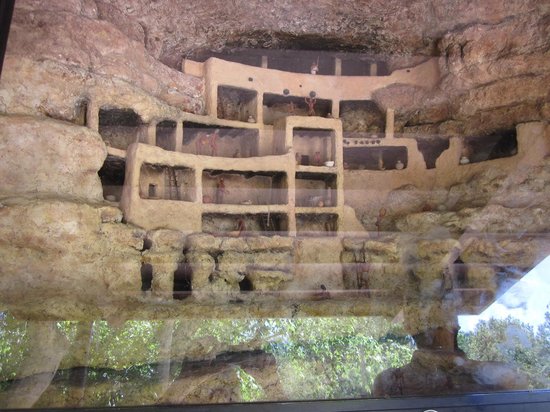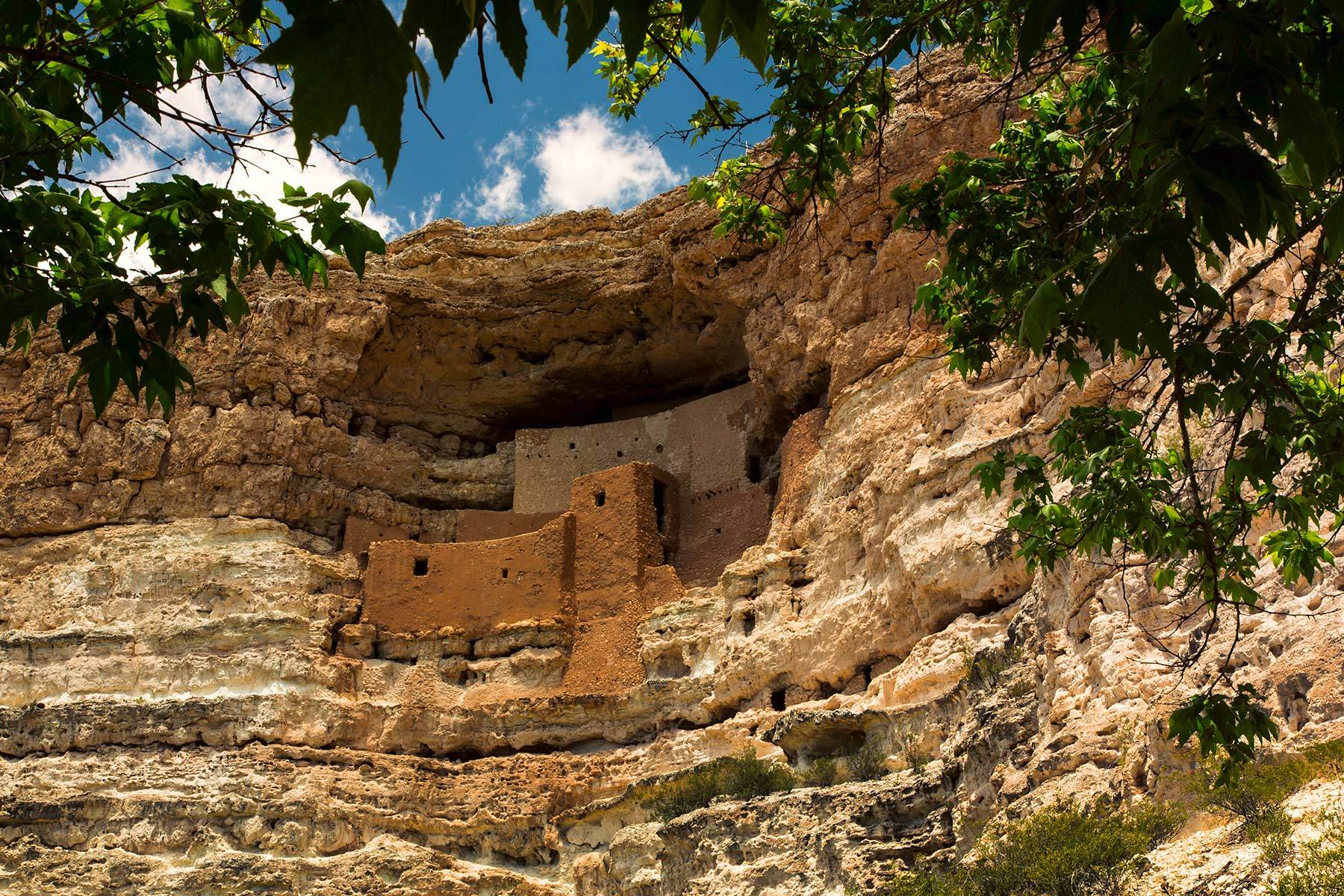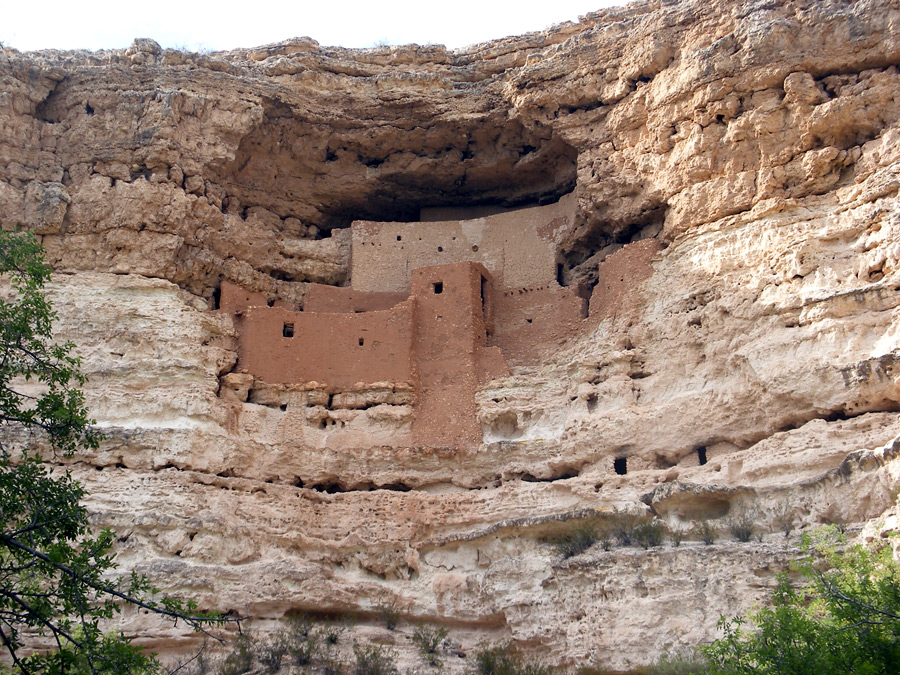Montezuma Castle National Monument protects a set of well-preserved Ancestral Puebloan cliff dwellings near the town of Camp Verde, Arizona, United States. The dwellings were built and used by the Sinagua people, a pre-Columbian culture closely related to the Hohokam and other indigenous peoples of the southwestern United States, between approximately 1100 and 1425 AD. The main structure comprises five stories and twenty rooms, and was built over the course of three centuries.
Neither part of the monument's name is correct. When European-Americans first observed the ruins in the 1860s, by then long-abandoned, they named them for the famous Aztec emperor Montezuma in the mistaken belief that he had been connected to their construction (see also Montezuma mythology). In fact, the dwelling was abandoned more than 40 years before Montezuma was born, and was not a "castle" in the traditional sense, but instead functioned more like a "prehistoric high rise apartment complex".
Several Hopi clans and Yavapai communities trace their ancestries to early immigrants from the Montezuma Castle/Beaver Creek area. Clan members periodically return to these ancestral homes for religious ceremonies.
Evidence of permanent dwellings like those at Montezuma Castle begins to appear in the archaeological record of Arizona's Verde Valley about 1050 AD, though the first distinctly Sinagua culture may have occupied the region as early as 700 AD. The area was briefly abandoned due to the eruption of Sunset Crater Volcano, about 60 miles (97 km) to the north, in the mid-11th century. Though the short-term impact may have been destructive, it is possible that nutrient-rich sediment deposited by the volcano may have aided more expansive agricultural endeavors in the decades following the eruption. During the interim, the Sinagua lived in the surrounding highlands and sustained themselves on small-scale agriculture dependent on rain. After 1125, the Sinagua resettled the Verde Valley, utilizing the reliable watershed of the Verde River alongside irrigation systems left by previous inhabitants, perhaps including Hohokam peoples, to support more widespread farming.
Construction of the Castle itself is thought to have begun around this time, though the building efforts probably occurred gradually, level-by-level, over many generations. The region's population likely peaked around 1300 AD, with the Castle housing between 30 and 50 people in at least 20 separate rooms. A neighboring segment of the same cliff wall suggests the existence of an even larger dwelling (referred to as "Castle A") around the same time, of which only the stone foundations have survived. The discovery of Castle A in 1933 revealed many Sinagua artifacts and greatly increased understanding of their way of life.
The latest estimated date of occupation for any Sinagua site comes from Montezuma Castle, around 1425 AD. After this date, like other contemporaneous cultural groups in the southwestern United States, the Sinagua people appear to have abandoned their permanent settlements and migrated elsewhere. The reasons for abandonment of these sites are unclear, but drought, resource depletion, and clashes with the newly arrived Yavapai people have been suggested. Due to heavy looting in the late 19th and early 20th centuries, very few original artifacts survive from Montezuma Castle, though other Sinagua sites have remained more or less intact.












